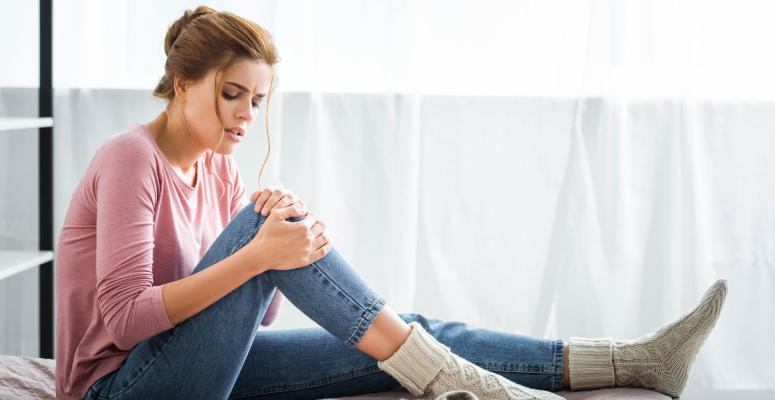
Knee pain is a common condition that can be caused by a variety of factors; injury and arthritis are two such factors that often lead to knee pain. If you are experiencing knee pain, you can visit a physical therapy clinic to find relief. Physical therapists usually offer a range of treatment options, which can sometimes make it difficult to know what treatment will work best for you. Some knee pain requires more intensive treatments, like medication and surgery. It is important to speak with your health care provider when making decisions about how to treat your knee pain.
Cupping is one technique a physical therapy specialist may recommend for knee pain. This technique is a form of manual therapy, meaning a specialist physically manipulates your joints, muscles and soft tissue. Cupping has been used since ancient times, and it is still used widely today. Scientific studies strongly suggest that cupping is effective for relieving pain with no adverse effects. This technique can be applied to help treat many different ailments, with some turning to cupping for their knee pain.
What is cupping?
Cupping is a manual therapy technique that involves placing glass or plastic cups on the patient’s skin to create suction. This vacuum suction lifts the skin and the soft tissue underneath. Target areas for treatment may not be receiving sufficient blood flow before cupping; this may be due to inflammation and swelling, in addition to other causes. When the soft tissue is lifted by suction, more blood is drawn to the cupped area. This can reduce inflammation and improve circulation.
Is cupping effective for knee pain?
Cupping is designed to effectively reduce pain in different systems throughout the body. It is most effective in synergy with other treatment options, so it is important to speak with a physical therapy specialist to build a thorough treatment plan. A treatment plan may involve exercises to complete at home as well as in-clinic techniques like cupping. Below are some of the ways cupping can be helpful for treating your knee pain:
- Reduced inflammation — Cupping can help to reduce inflammation at the knee joint. By drawing blood into the area, cupping can help release tension in the muscles and tissue surrounding the knee. This can promote the removal of scar tissue and reduce inflammation.
- Increased flexibility — When tension is released around the knee area, stiff tissue and muscles become more flexible. This allows for a greater range of motion after cupping therapy for knee pain.
- Improved circulation — The vacuum effect of cupping increases blood flow to the target area. By improving circulation, cupping promotes the flow of oxygen and nutrients to affected tissue. This encourages healing, which can speed up recovery from knee pain.
Are there other effective knee pain treatments?
Though cupping for knee pain can be effective, it is usually intended to work in conjunction with other therapies. Below are some other physical therapy treatment options that can help address knee pain. A comprehensive treatment plan may involve several of these to encourage recovery.
- Strengthening exercises — Strengthening the muscles around the knee joint can help improve stability and reduce pain. Exercises to improve muscle strength can also make your body more resilient, which can help prevent future injuries.
- Other manual therapies — Physical therapy specialists usually offer multiple forms of manual therapy, including cupping. Cupping for knee pain is one of many methods available. After assessing the underlying factors of your knee pain, you and your physical therapist may decide to try a combination of manual therapy treatments to promote relief and recovery.
- Stretching exercises — Stretching can help increase range of motion at the knee joint. This can help you regain use of your knees during recovery. When accompanied by cupping, these stretching exercises can effectively reduce pain and muscle stiffness. Like strengthening exercises, stretching can reduce the risk of future injuries by improving flexibility around the knee joint.
Cupping is an effective treatment option, especially when paired with other therapy techniques. With the help of a physical therapy specialist, you can incorporate cupping into a treatment plan designed to alleviate your knee pain.
Alliance PTP is ready to help you find top-notch physical therapists who can perform cupping for your knee pain
Are you suffering from knee pain? At Alliance Physical Therapy Partners, we’re proudly bringing together physical therapy practices across the country to help people get the high-quality PT they need.
Want to see a physical therapist in person? We can put you in touch with an Alliance PTP partner that’s close to you and that can help you address knee pain.
Not keen on in-person PT sessions or not close to an Alliance PTP partner? No worries. We also offer effective and affordable virtual physical therapy through our Agile Virtual Physical Therapy platform.
Come find help for your injury or chronic condition today!
Get Help at a Location Near You
